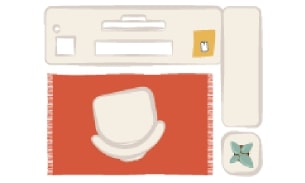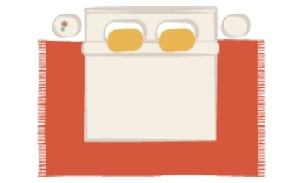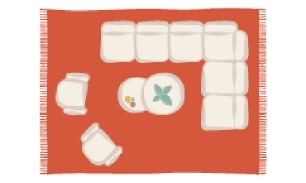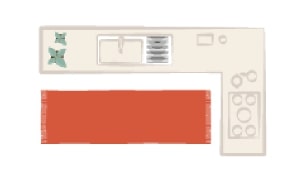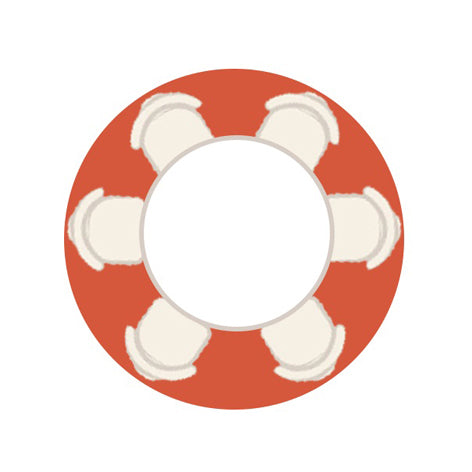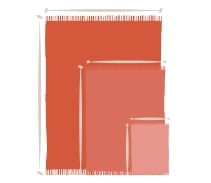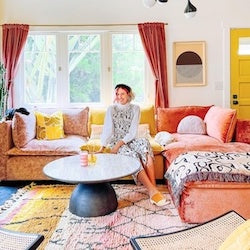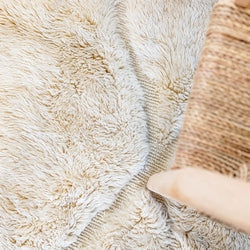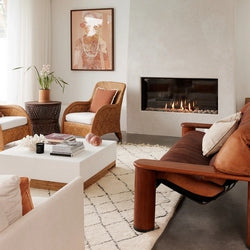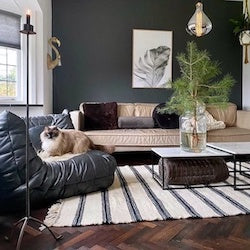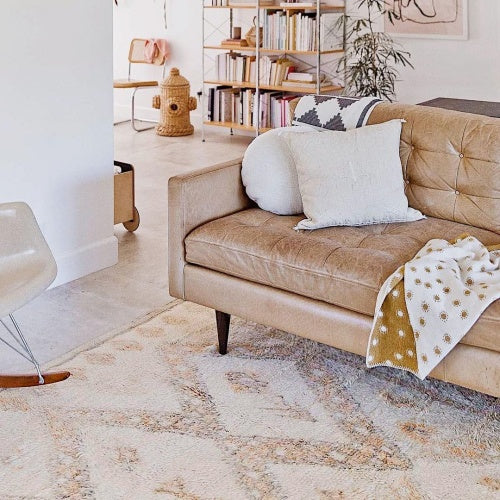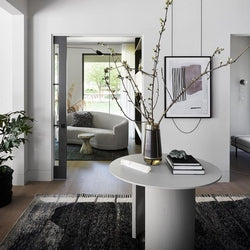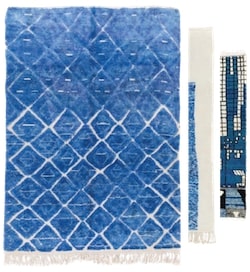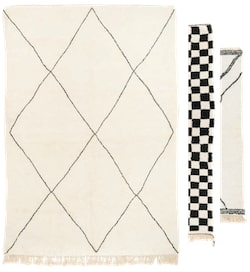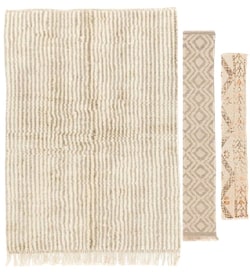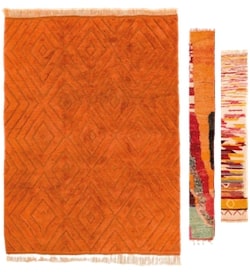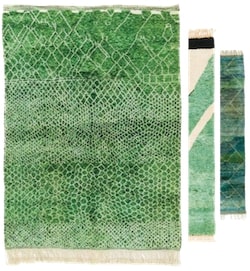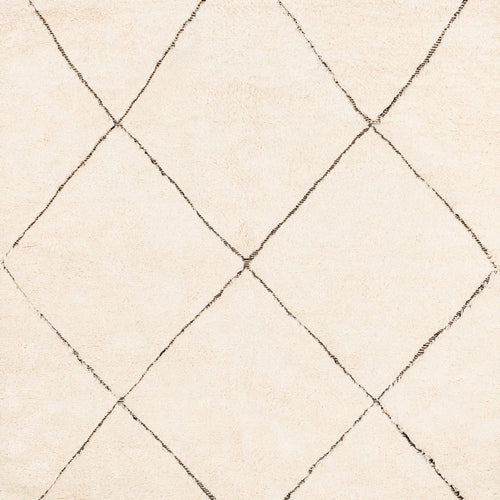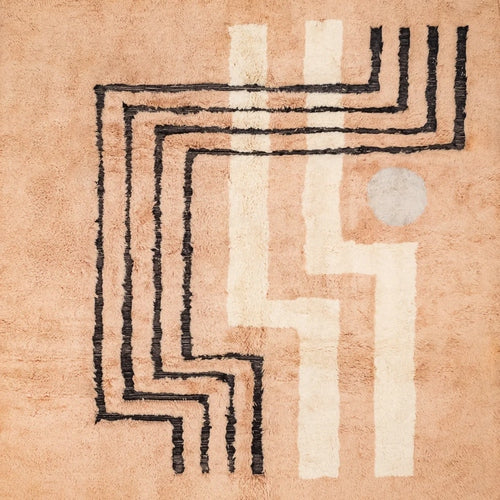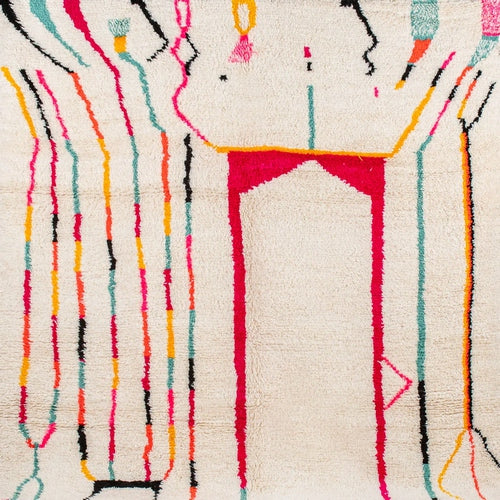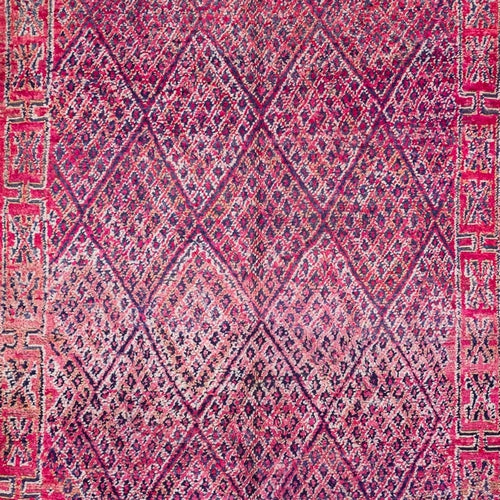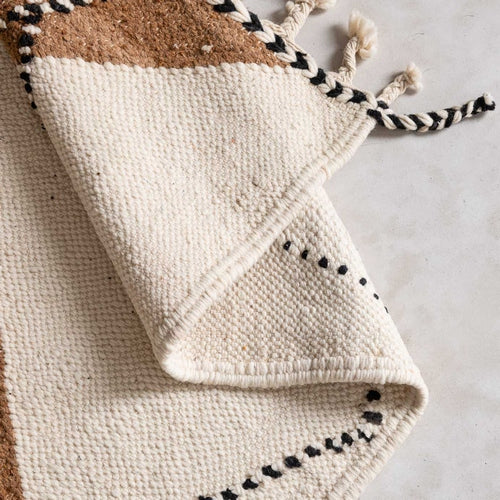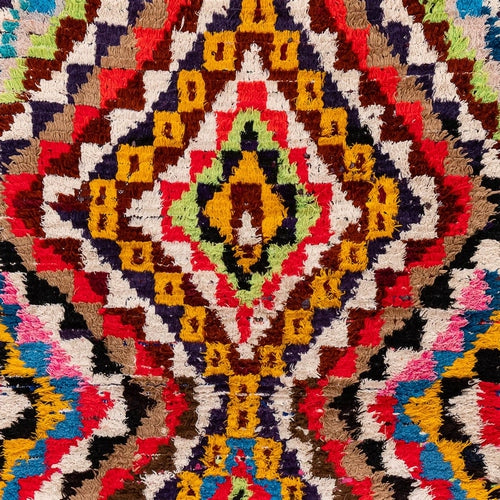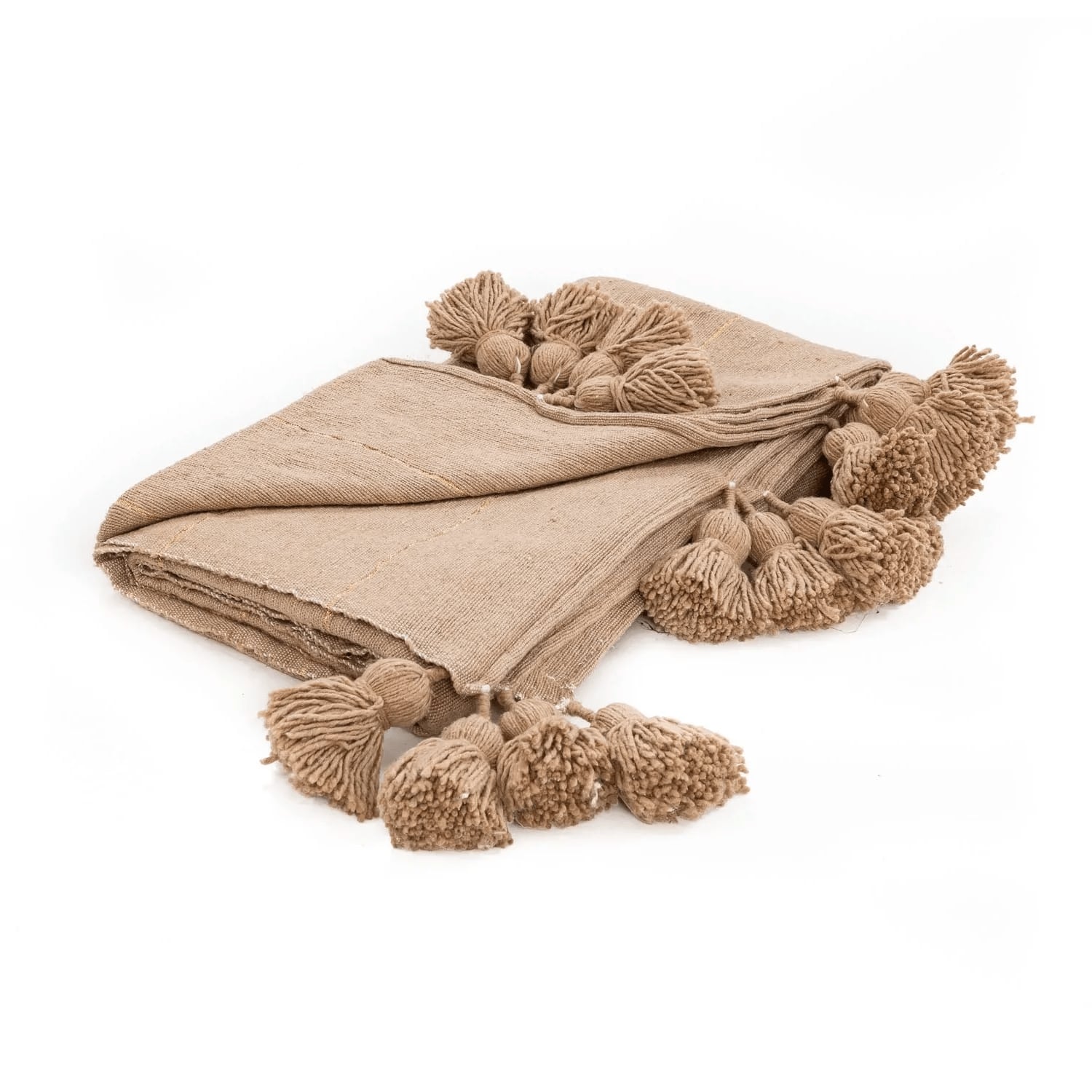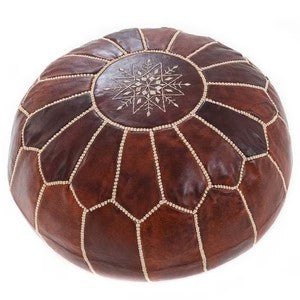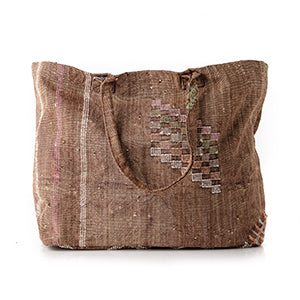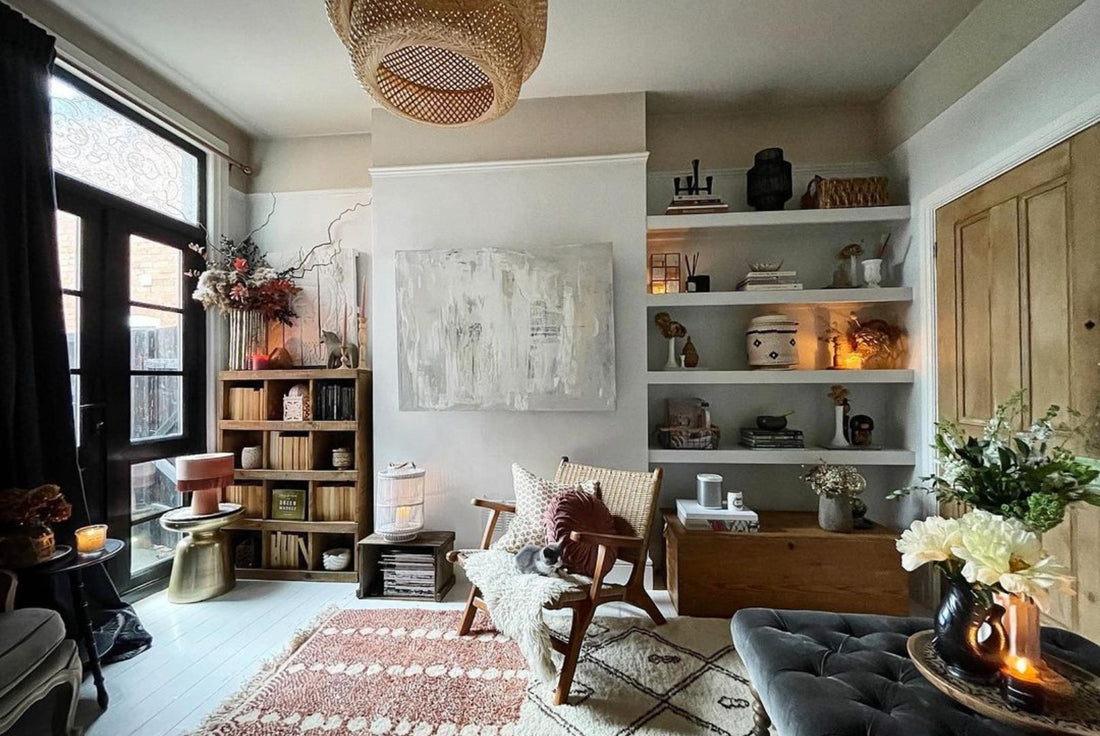Moroccan rugs are not just floor coverings; they’re works of art that bring warmth, sophistication, culture and charm to a space. No wonder interior designers and homeowners alike have been obsessed with them for centuries. With their rich history, intricate patterns and colours, they have been a staple in Moroccan homes for generations. From different regions of Morocco, each rug tells a story of traditional craftsmanship passed down through the generations, often made by skilled artisans from the Berber tribes, reflecting their nomadic way of life and heritage. Whether you love the geometric patterns of Beni Ourain rugs or the colourful motifs of Azilal rugs, having a Moroccan rug in your home not only adds warmth and style but also celebrates a culture. Let’s get into the world of Moroccan rug decor and learn how to turn your home into a bohemian paradise!
Choosing the Right Moroccan Rug
The first step to Moroccan rug decor is choosing the right rug. Each Moroccan rug is handmade and unique, so it’s a one of a kind piece that will add personality to any room. Let’s get into it:
Moroccan Rug Style
Moroccan rugs are famous for their style; bold geometric patterns, striking colours and plush textures. These rugs are handwoven by Berber women using techniques that have been passed down for centuries. The simple geometric designs, often asymmetrical and diamond shaped are characteristic of Beni Ourain rugs and add to the overall elegance. The patterns often have symbolic meaning, representing Berber culture and nature. From the diamond shapes symbolising fertility to the zigzag lines representing mountains, each design element adds to the beauty of the rug.
Moroccan rugs are a visual feast! They come in a riot of patterns, from geometric to tribal and colours that pop. Each rug is unique so choose one that speaks to you.
Size and Shape
When choosing a Moroccan rug for your space consider the size and shape of the room and the use of the rug. Most Moroccan rugs are made with bold colours and soft wool so they’re perfect for bohemian, eclectic styles or modern interiors looking for a pop of colour and beauty.
Size matters! A larger rug can anchor a seating area in the living room or dining room and create a cozy nook. A smaller rug can define a smaller area within a room or be used as a decorative accent under a coffee table or beside a bed. As a general rule of thumb aim for a rug that extends at least 2-3 feet beyond your furniture on all sides.

Consider the shape of your space too – a rectangular rug might be perfect for a hallway and a round one could be a nice touch in a living room. The style of the rug, whether it’s a Beni Ourain, Kilim or Boucherouite will also impact the overall vibe.
And finally choose a rug that matches the colours and patterns in the room. Moroccan rugs come in a rainbow of colours. Earthy tones like terracotta, ochre and olive green are common but you’ll also find bold colours like cobalt blue, emerald green and fiery red.
Styling Your Moroccan Rug
Now the fun bit: styling your Moroccan rug with its colours to create a space that’s cosy and cool.
Mixing and Matching Patterns and Textures
Moroccan rugs love to be surrounded! Start with your rug as the base and build from there. Layer a vintage rug with other rugs to add dimension and character to your space. Add texture with chunky knit blankets, plush pillows and woven baskets. Don’t be afraid to mix and match patterns and colours to create a colourful and eclectic look. Think bold pillows, knitted throws and even a touch of metallic for extra glamour.
Embrace this eclectic style by pairing your Moroccan rug with pillows in contrasting patterns, like tribal prints or modern geometrics. Add textured throws in wool or linen to add depth and tactility. Tassels, fringe and embroidery can further enhance the rug’s texture and create a sensory experience that invites touch and admiration.

The placement of your furniture will also impact the overall look. Experiment with different layouts to find the perfect balance of form and function. Use the rug as a focal point and place your key furniture pieces on top.
Don’t be afraid to use Moroccan rugs to create a unique space. That’s what they’re for!
Layering
Layering is key to Moroccan decor. Pile on the pillows, drape a throw blanket and display your favourite trinkets on the rug. The more layers the better!
Moroccan interior design loves a layered look that combines elements from different cultures and eras. To achieve this look layer your Moroccan rug over a larger natural fibre rug, like jute or sisal, to add visual interest and define the space. Layered rugs not only add depth but also provide extra comfort underfoot especially in high traffic areas like living rooms or entryways. Place your furniture and decor around the layered rug to create a cohesive and cosy atmosphere.
The more messy the better as it adds to the cosy and cultural vibe.
Moroccan Style in Your Space
Style your Moroccan rugs to show off their versatility and charm in different rooms. Your Moroccan rug is the main attraction but it’s the supporting actors that really bring the magic. Here are some ideas to take your space to the next level:
Moroccan Style Accessories
Moroccan inspired accessories can take your space to new levels. Think colourful poufs, intricate lanterns and decorative mirrors.

Add Moroccan inspired accessories to your Moroccan rug and space. Hang Moroccan lanterns with intricate metalwork to cast beautiful patterns of light and shadow across the room. Choose decorative ceramics in bright colours or traditional Berber pottery to add authentic charm to shelves and tables. Indoor plants in patterned pots will bring a fresh touch of greenery and match the colours and motifs of your Moroccan rug. Stained glass lanterns, blue and white ceramics and indoor plants are all great to add to your rug and Moroccan style.
Moroccan Rugs in Different Rooms
Moroccan rugs are versatile enough to be used in any room in the house. From the living room to the bedroom they can transform any space by adding warmth and cosiness. Use them as a statement piece or to anchor the room’s colour palette.
Living Room
The living room is often the hub of the home, where family and friends congregate. A large Moroccan rug can be the focal point of the room and enhance the atmosphere, capturing the essence of a traditional Moroccan living room with its bold colours and warm tones.

Create a cosy and welcoming space with a large Moroccan rug as the focal point, grounding the seating and tying together all the decor.
-
Choose a rug that matches your existing furniture and decor and use its bold patterns and colours to tie the room together visually.
-
Place the rug to anchor the seating, so it goes beyond the coffee table and under the front legs of sofas and chairs for a cohesive look. This adds warmth to the room and is a beautiful focal point.
-
Layer the rug with plush cushions and throws in matching textures to add extra comfort and style and invite everyone to sit back and relax.
Bedroom
Your bedroom should be your haven of comfort and personal style and a Moroccan rug can help create that.

-
Place a smaller Moroccan rug beside your bed or at the foot of a chair to add some luxury and warmth to the space.
-
The intricate patterns and plush texture of the rug can be bohemian chic or rustic charm depending on your style.
-
Try different colours and patterns to find one that matches your bedding and other furniture and create a cohesive and inviting space that’s you.
Whether you go for a traditional Berber or a modern interpretation the Moroccan rug will add softness and visual interest to your bedroom decor.
Looking for more Moroccan bedroom ideas? We've got you covered!
Dining Room
Bring Moroccan style to your dining room by using a Moroccan runner to define the dining space and add a pop of colour and texture to your table setting.

-
The geometric patterns and bright colours of Moroccan rugs can work with modern and traditional dining furniture and add an eclectic touch to the space.
-
Choose a runner that goes along the length of your dining table, so it doesn’t obstruct chair movement and adds visual interest to the floor. This not only protects your floor but also elevates the dining experience by creating a separate area for dining and adds to the overall style of your dining room.
Home Office
Even in unexpected places like home offices or reading nooks a Moroccan rug can add personality and style to the space. Bring some inspiration to your workspace with a smaller Moroccan rug under your desk.
Even unexpected spaces like home offices or reading nooks can benefit from a Moroccan rug.
-
A smaller Moroccan rug under your desk can turn the workspace into a cosy and inspiring space.
-
The intricate designs and bright colours of the rug can add personality and style to the room and make it a space where creativity and productivity thrives.
-
Choose a rug size that fits under your desk and chair and allows for easy movement and adds a bit of cultural charm to your workspace.
Whether you want a subtle accent or a showstopper a Moroccan rug in your home office will elevate the decor and show your appreciation for handmade craftsmanship and global design.
Moroccan Rugs 101: Key Points
Moroccan rugs are very versatile and can add a touch of exotic glamour to any room. Decorating with Moroccan rugs is not just about adding a beautiful floor covering to your home it’s about embracing a tradition and weaving its heritage into your daily life. Whether you like the classic style of vintage Moroccan rugs or the bold colours of Boucherouite rugs, each Moroccan rug is an opportunity to express yourself and honour a centuries old craft.
By choosing the right rug for your space, mixing and matching patterns and textures with abandon and layering with Moroccan accessories you can create a space that’s as individual and inspiring as the rugs themselves.
So go for it! Remember the most important thing is to have fun and be yourself. Try different styles and don’t be afraid to make mistakes – it’s all part of the fun!
Happy decorating!

